Android App Development in the UK: Full Step-by-Step Guide
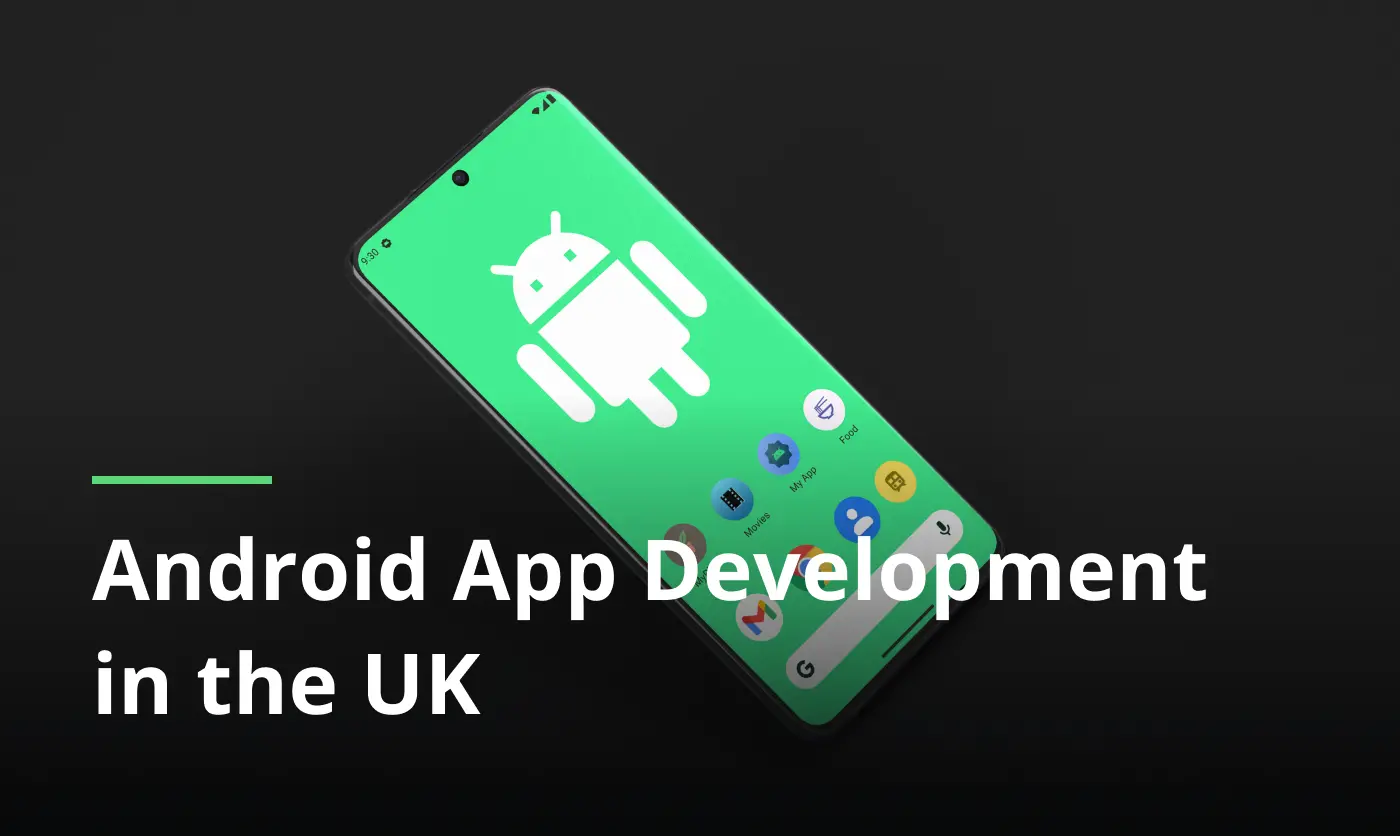
Looking to dive into Android app development but not sure where to start? This comprehensive guide breaks down everything you need to know — from setting goals and choosing the right tech stack to ensuring security and keeping up with the latest trends. Whether you’re launching your first product or scaling an existing solution, this overview will help you build a successful Android application tailored to your business needs.
If you’re looking to hire a reliable Android app development team in the UK, explore our mobile app development services at Limeup and get expert support for your next digital product.
Developing apps for Android is no walk in the park but implementing strategies from our guide that covers from designing intuitive interfaces to writing efficient code within the in-demand tech stack. You can overview this topic since, at the end of the day, success boils down to delivering an outstanding app.
Considering Android mobile application development, we will cover security measures, how to make one with your resources, trends and more. You will learn about app development companies in the UK and what they can offer to you, so let’s delve deeper into the topic.
What is Android app development?
Cherry-pick software application is what you are able to receive as a part of Android-based development, and you may think, “OK, sounds a bit too easy for Android apps development?” but this Google-based platform is one of the most widely used worldwide, powering billions of smartphones and tablets, TVs and other devices like for cars multimedia, wearables, etc.
Talking more simply, the world is your oyster with a reliable app creation based on writing code in programming languages and tech stack we will consider further in this article using Android Studio as an official integrated development environment (IDE) that provides developers with tools for coding, debugging, designing, testing.
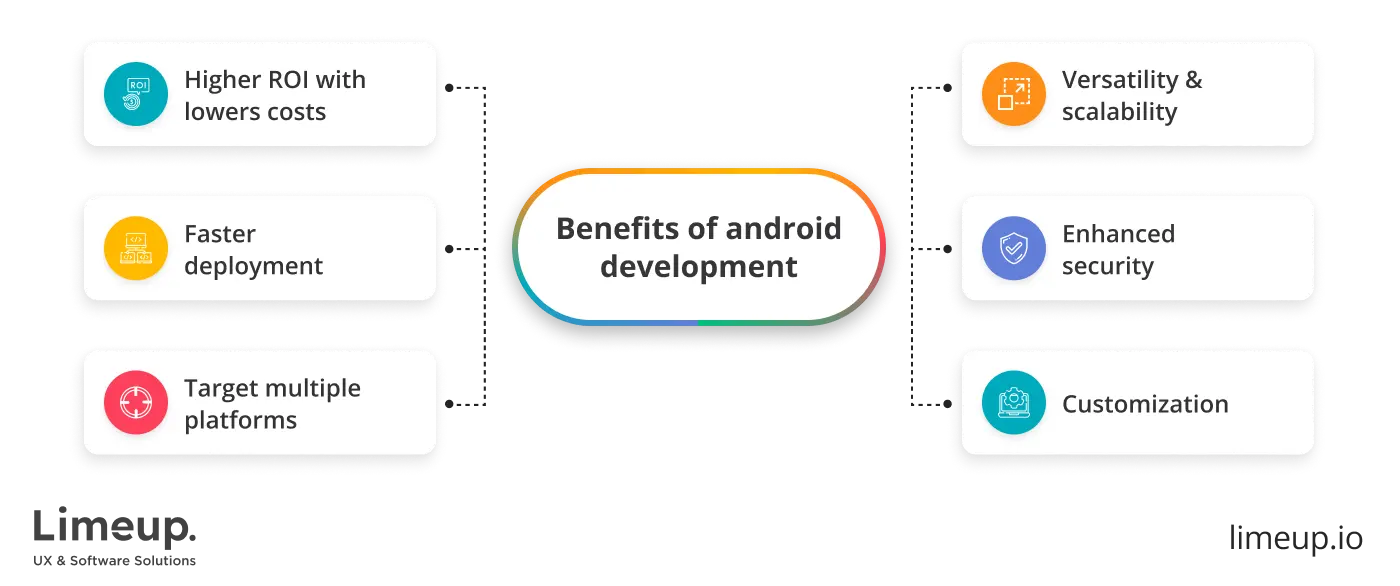
Talking about the core elements in our summary that may feel like gasping the nettle, we can name backend logic that defines the backbone of business logic, managing data and handling user input, allocate resources. This point also includes testing & debugging before release when developers rigorously test your application across a plethora of platforms and devices.
Android mobile app development also encompasses considerations like performance optimisation, code enhancements, better security and ever-evolving needs compatibility focused on the open-source platform’s nature of flexibility, vast opportunities and breaking the mold for your business.
Therefore, such a development process is all about using programming languages, frameworks and tools to create an app that is 100% meets your end-users expectations or your organisation’s needs when it comes to enterprise-grade solutions. Typically, to develop an app, you have to go through a few steps, from idea conceptualisation to design/development, QA testing & launch.
How to build an Android app?
Since over 80% of the world’s population have smartphones, you would definitely like to reach such a wide audience with an application that reflects on your brand perception and grows in revenue. For now, let’s delve deeper into the 4-step guide on developing an application that bridges the gap between your end-users and business.
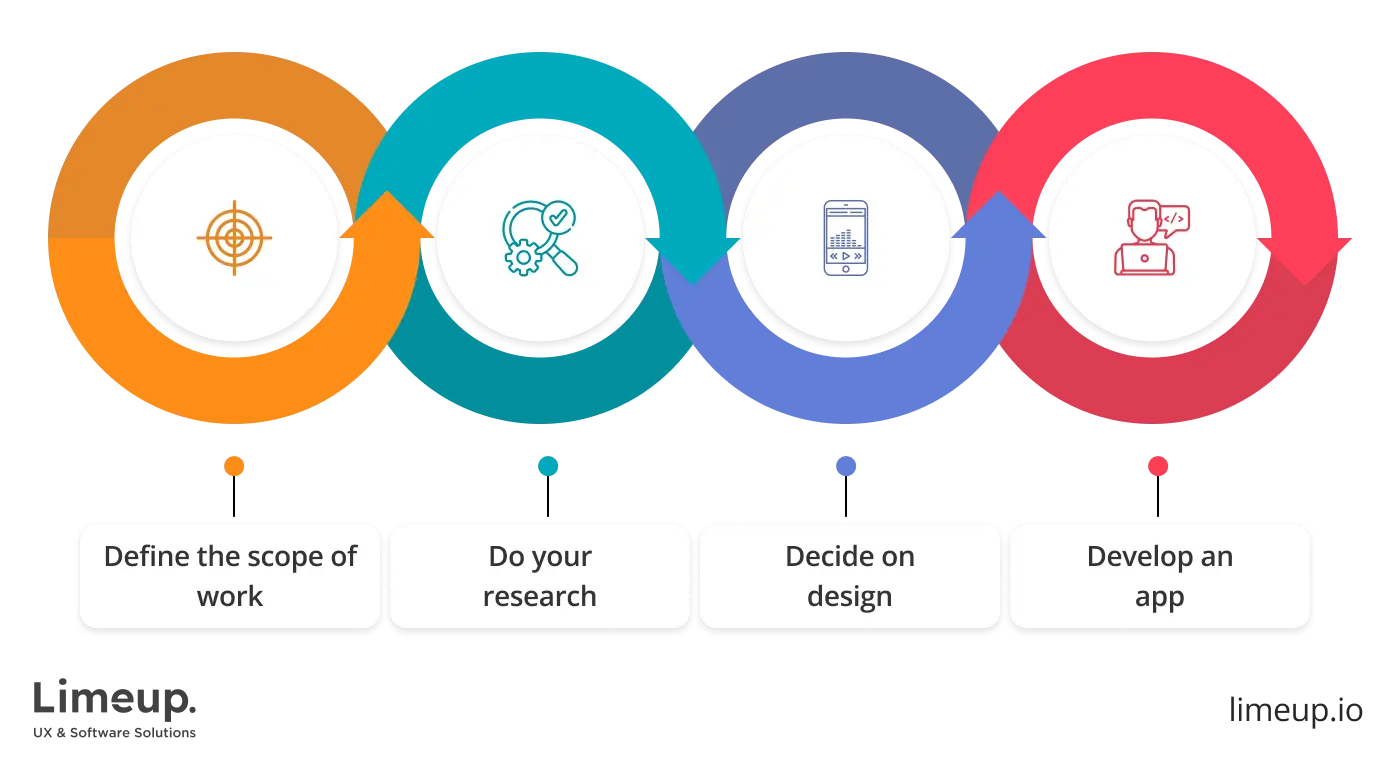
To put it simply, decide on your “Whys” for a project, what’s your purpose, what will be done in case you successfully implement it or what will not happen if you leave this idea as a dream before going to sleep? Therefore, you pre-determine the app path before contacting a vendor (oh, spoiler alert) to ensure the plan aligns with business objectives.
Cost efficiency in app development on Android is another to-go point since, with a pre-defined plan, you are able to minimise the risk of budget overrun and control resources. Setting priorities is all about defining what features are essential for your business, which of them will represent your purpose and solve end-users problems, cover their pain points, align with business values.
Setting the foundation for a competitive advantage, research is needed before you decide to develop an application and we recommend that you start with market understanding — cut-throat ones require delving deeper into competitors, trends, features’ demands, in other words, ensuring that you are building solution that is relevant to requirements.
You are also able to receive in-depth insights about target users’ real-world problems you can address with your solution with risk mitigation since “52 thousand mobile apps were released through the Google Play Store,” according to the latest research, and you have to represent a unique and tailored app investigating monetisation strategies.
Designing as a part of developing app for Android is all about UX in the first place since a well-thought-out design ensures intuitive navigation, seamless user experience, satisfaction and engagement. Brand consistency is reflected in design within brand identities, like color, fonts, visual elements that build trust and customer loyalty, recognition and strengthen online presence.
The third point to be named stands for accessibility, as you can ensure the app can be used by a broader audience, including users with disabilities. You have to enhance inclusivity and reach a wider number of target visitors. Simultaneously, optimising performance is all about choosing proper content, layouts and files.
You may think, “OK, what else? How to develop an app?” and we recommend contacting a reliable vendor who can take on your tech challenges. If you’re looking for experienced developers in the UK, check out our Android app development services at Limeup.
Hiring a team of developers will be jotting down your requirements and developing an app considering the backend and frontend. Therefore, you are able to receive a secure and stable solution that meets your needs from vendors who develop Android apps.
On the other hand you are able to educate yourself with a free course from Android creators that covers a few units with essential data but it’s all about investing your time, if you would like to receive application here and now, we recommend you to consider hiring app developers.
Why so? — because you do not need a lot but basic knowledge even for simple apps like calculator with Kotlin in the basic course from Android. You can also try numerous tutorials but receiving a highly customisable solution is all about contacting a proper vendor.
Moreover, talking about hardware you need many resources like robust CPU, better Intel, 16 GB RAM for the first app, SSD 256GD which define a proper machine for you to start developing.
Tech stack for developing apps for Android
Within growing demand, we will consider cutting-edge technologies and software tools you can implement to receive a reliable app, or you can test knowledge amidst Android app development companies in the UK who are highly experienced in such development.
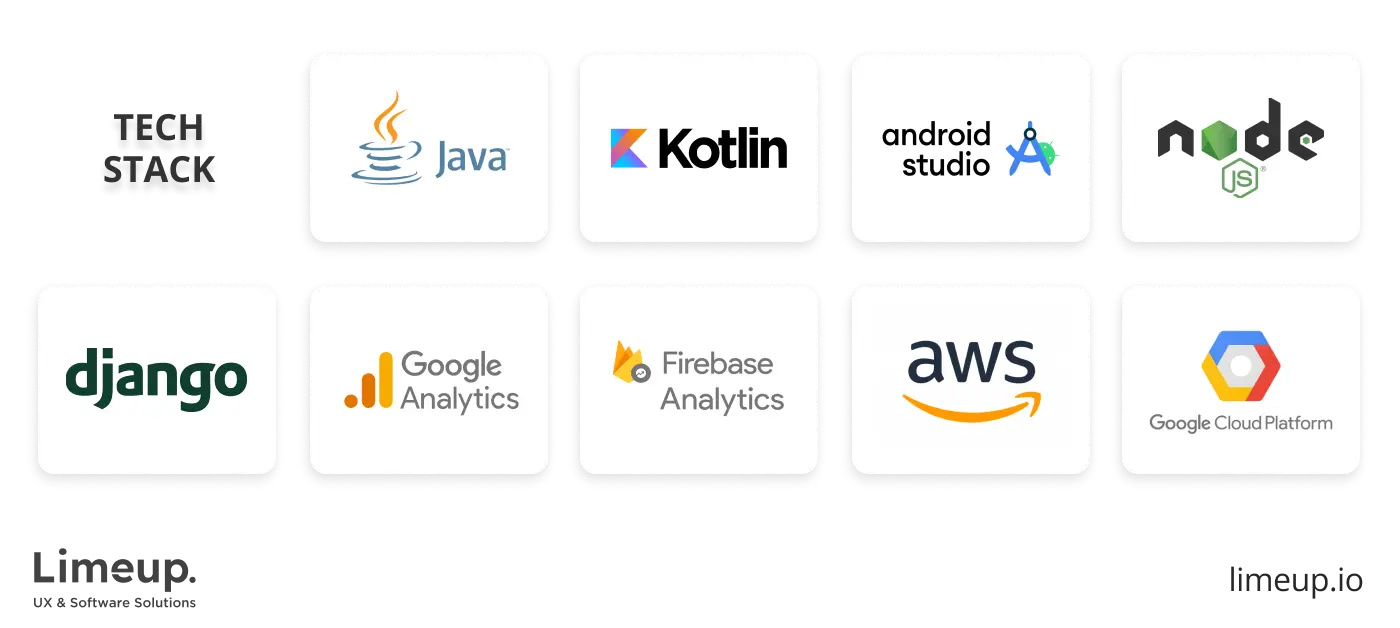
Therefore, here’s a table of components that come in handy in the question, “How to develop an Android app?” within synopsis:
| Option | Tech stack | Short description |
| Programming languages | Java and Kotlin | Preferred by Google, these are official languages for Android development. |
| IDE (Integrated Development Environment) | Android Studio | Provides a platform for app development with coding tools. |
| Backend | Node.js, Django | Ones of the most in-demand frameworks used for complex app development. |
| Analytics | Google Analytics, Firebase Analytics | Tools for app usage and behavior tracking. |
| Cloud services | AWS, Google Cloud Platform | Cloud solutions that enable data storing, hosting and managing. |
To speak in more details, let’s consider each of the points, for example Java is the backbone in the question of how to make Android app being a powerful and object-oriented programming language with a strong popularity, large community, extensive libraries. Kotlin is to-go technology with enhanced syntax, null safety, interoperability with Java.
Android Studio is an official environment for development built on JetBrains’ IntelliJ IDEA built on-premise as code editor, debugging tool, code completion, real-time error handling, buil-in emulator, robust support.
Developers also usually use Android SDK (Software Development Kit) as a set of libraries and tools that are essential for building, testing, debugging processes with necessary blocks for efficient development, like in the development of Slack or Snapchat — they also can use Jetpack as a suite of libraries, Dagger/Hilt and others.
Considering UI frameworks, developers usually prefer to use Android UI with pre-built templates or Jetpack Compose for the native and intuitive UI building process with less code, accelerated development and powerful support.
You may feel a little overwhelmed defining how to create Android app with all the provided information but here’s the point that tech stack can make or break your project so even when choosing a vendor we recommend test their ability to build robust apps for your project to remain in-demand, scalable, maintainable, optimised.
We recommend focusing on four elements that are able to be tested — backend, frontend, mobile platform and hosting so that you can receive an app like Amazon with a wide market share or Airbnb built on Java.
Within an official website, you are able to receive comprehensive information about essentials like Wear OS, Android for cars, TV and other rare knowledge as well as about design & plan considering UI, architecture and quality.
Security in Android application development
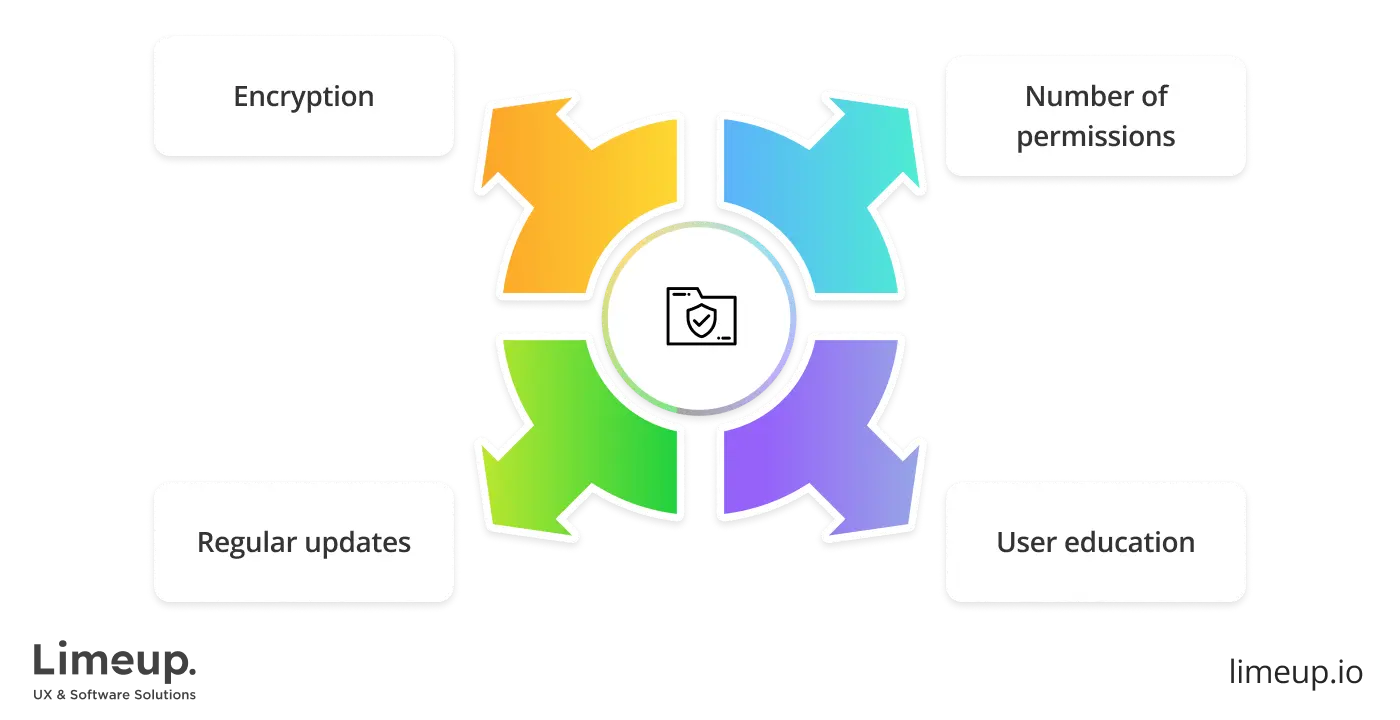
Ensuring security in Android app development is critical to protect user data, preserve your brand’s reputation, and comply with industry standards. Despite Android being an open-source platform, there are robust practices and tools available to safeguard your application from potential threats.
Here’s a practical security checklist every business should consider when developing an Android app:
Security сhecklist
- Use code obfuscation. Prevent reverse-engineering of your app logic using tools like ProGuard or R8.
- Apply strong encryption protocols. Protect sensitive data in transit and at rest with AES (Advanced Encryption Standard) and SSL/TLS for secure communications.
- Minimize permissions scope. Request only the permissions that are strictly necessary for your app’s functionality. Excessive access can create vulnerabilities and reduce user trust.
- Implement biometric authentication. Use fingerprint or facial recognition to protect user access and enhance app-level security.
- Avoid hardcoding credentials. Never store API keys, tokens, or passwords directly in the source code. Use encrypted storage or environment-based solutions.
- Regularly patch vulnerabilities. Keep your app updated with the latest security patches and framework updates to address emerging threats.
- Educate users. Provide users with best practices for maintaining security, like setting strong passwords and avoiding untrusted networks.
By following this checklist, you ensure your Android app is compliant with industry standards and resilient against the most common security threats.
Trends in Android mobile application development
Being one of the most widely used mobile platforms in the cut-throat market, Android is not rocket science but still involves cutting-edge and prominent trends.
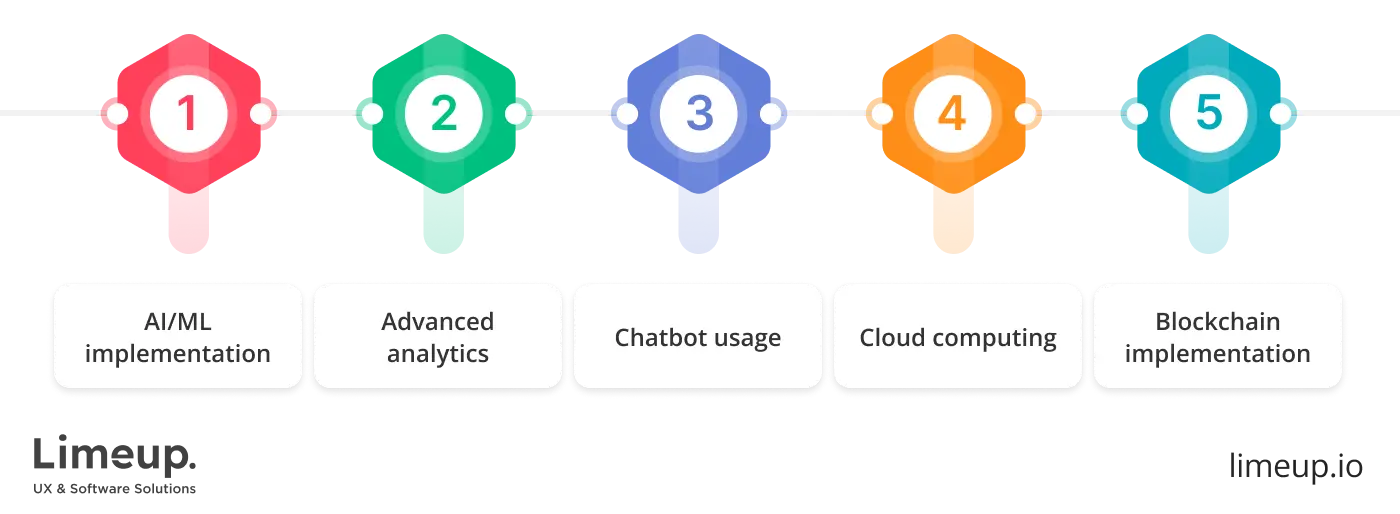
Adopting them means opening an opportunity for competitive advantage so in this part of the brief overview we will consider the top 5 trends to follow:
-
AI/ML implementation can be used for various purposes like Spotify which creates personalised music recommendations based on customers’ preferences. If you are running a healthcare project, you are able to create an app that uses machine learning or artificial intelligence to provide end-users with custom tracking systems, challenges, food preferences and more.
AI to build Android app is also used to engage users since it can predict what users will do next according to their purchases, online behavior, it can especially be used for pain points covering within data collected, uncovering engagement patterns.
-
Advanced analytics is reflected in predictive analytics, app performance optimisation since you are able to track actions and identify bugs before they appear with real-time monitoring.
Monetisation strategies are enabled within better user experience and segmentation since you are able to provide customers with a few options like subscription, in-app purchases or else. The core point in analytics stands for the ability to predict behavior prediction and sell your app to people who are ready to pay.
-
Chatbot usage for 24/7 customer support is a must-have for businesses who would like to turn visitors into customers with streamlined interactions and user engagement, automating routine tasks and reducing the need for human intervention and human error, especially when it’s powered by AI we have considered above.
There are numerous ways to implement chatbots and make Android app behind consultation, for example, if you run a fintech-related business, you can use this technology to enable access to transactions made, offering personalised promotions, improving conversion rates.
-
Cloud computing is used to enhance scalability, performance and user experience since you can leverage cloud infrastructure and allocate resources based on human traffic and load. Real-time data processing is another crucial moment that can be assigned as messaging, live streaming and more.
For you as a business owner, cloud computing can be a beneficial moment when it comes to cooperation between departments implementing shared files and resources, tools and environments for sharing data and more agile development process.
-
Blockchain implementation in making apps for Android is all abo decentralisation and enhanced security since you are able to represent end users with using encryption and consensus mechanisms making it harder for hackers to steal sensitive data. It’s also an integral point for fintech companies within transparent transactions and smart contracts.
Also, consider cryptocurrency integration as a payment option facilitating secure and low-fee transactions that are simultaneously secure for industries like gaming, eCommerce and more.
Summing up
Putting your best foot toward defining what stands behind creating an Android app you have come through this article and for now you are equipped with the knowledge of what stands behind such development and much more. To wrap up all that we said in overview we recommend contacting a reliable vendor who can take on your app challenges and deliver tangible results.
Unlocking this topic we have considered core features like security, integrations, scalability and others to represent you with what you are able to receive from cooperation with a proper company. You may think, “I’m only a business owner, what’s the purpose of knowing about Android?” and we will say that it’s better to be aware of challenges and trends to ensure the firm of your choice can deliver an outstanding app.
We have also considered what’s the point to create apps for Android — it enables an opportunity to increase user engagement, enhance brand awareness, reach a wider target audience etc. Therefore, with an app based on the Android platform you are representing your solution and receiving opportunities to monetise your operation within ads on paid cooperations.
As a business owner who read this article, you are able to make an efficient decision-making process when choosing a platform for your application leveraging our experience in Android-based development. Outlining what was said we have delved deeper into security measures for you to ensure that the desired app will protect customers and allow you to grow in revenue while empowering end-users’ loyalty.
If you would like to contact a reliable company, reach out to Limeup and receive a complimentary call during which you can discuss your project details.

